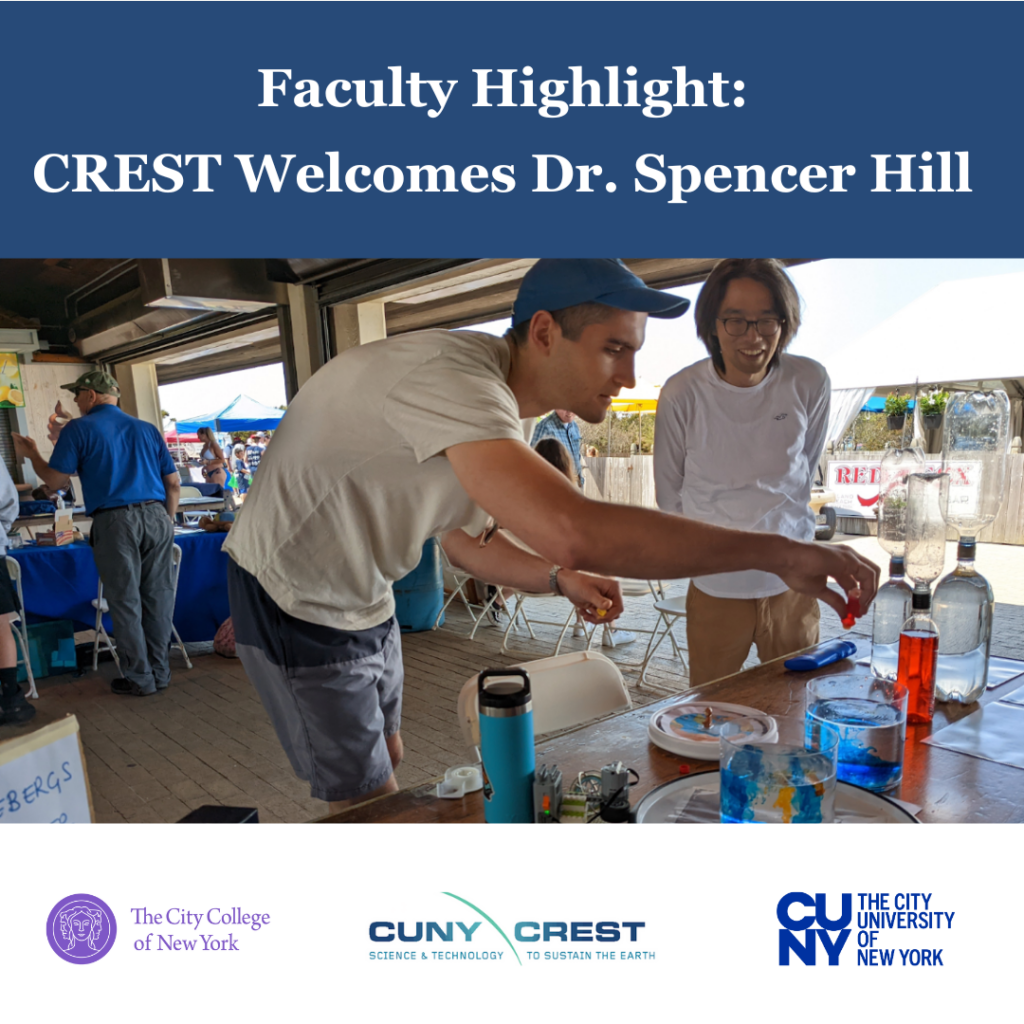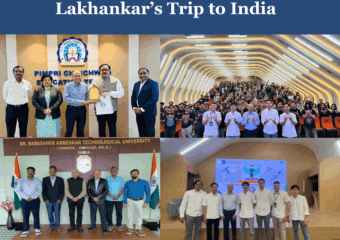Faculty Highlight: CREST Welcomes Dr. Spencer Hill
Dr. Spencer Hill joins the CREST institute as its affiliated faculty member. Dr. Hill joined CCNY as an Assistant Professor in the Earth and Atmospheric Sciences department in fall 2023. He teaches Climate dynamics, statistical methods in Earth Sciences. Dr. Hill joined the institute in March 2024.
Commenting on what motivated him to pursue a career in teaching, Dr. Hill said, “Since my National Oceanic and Atmospheric Administration (NOAA) Hollings internship as an undergraduate, I knew I wanted to pursue a career in academic research on climate science. I also wanted to teach and advise students, so a faculty job was always the natural end-goal. It is extremely exciting to have finally reached that dream as of last fall when I started at CCNY as an Assistant Professor.”
A role that Dr. Hill considers an important part of his journey is being a NOAA Hollings Scholar as an undergraduate, with a summer internship at NOAA Geophysical Fluid Dynamics Laboratory (GFDL) where he learned how to analyze climate models and began working with Yi Ming who became his PhD advisor. Dr. Hill later joined as a postdoctoral scientist at NOAA GFDL before he joined as CCNY faculty.
Dr. Hill also serves as the principal investigator on the National Science Foundation (NSF) grant to study “How Do Energy Fluxes Link Precipitation Variability Across the Tropical Weather-Climate Continuum?” Commenting on the same, Dr. Hill said, “This was a transfer of a grant to CCNY from my previous institution; I originally received the award in 2021. The postdoc I just hired at CCNY, Haochang Luo, is supported by this grant. We’re investigating how traveling, transient disturbances in the deep tropics move energy and in turn influence the time-mean tropical rainbelt called the Intertropical Convergence Zone.”
Dr. Hill is actively engaged in outreach using rotating tanks, which he does using the DIYnamics organization that he co-founded and used to co-direct.

A close-up shot of a demonstration of baroclinic instability in one of the DIYnamics rotating tank platforms. The larger, blue swirls are the baroclinic eddies, the same phenomenon that drives winter storms we experience in NYC. The smaller, red cells are evaporatively driven convection.
Dr. Hill received his Bachelor of Science in Atmospheric and Ocean Sciences and Applied Math from the University of California, Los Angeles in 2011 and his Ph.D. in Atmospheric and Ocean Sciences from Princeton University in 2016.




